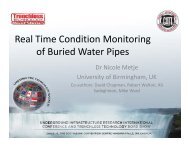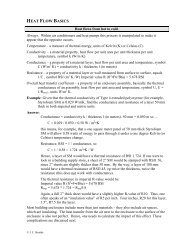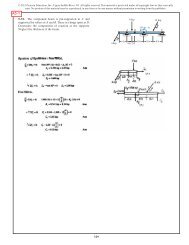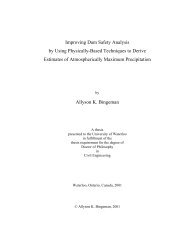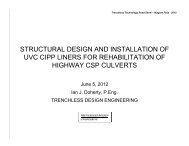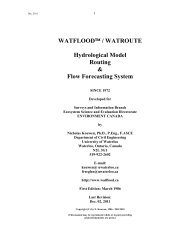Planning Horizontal Directional Drilling for Pipeline Construction
Planning Horizontal Directional Drilling for Pipeline Construction
Planning Horizontal Directional Drilling for Pipeline Construction
Create successful ePaper yourself
Turn your PDF publications into a flip-book with our unique Google optimized e-Paper software.
The analysis and interpretation of the subsurface conditions encountered should<br />
concentrate on factors pertinent to design and construction of the proposed HDD<br />
installation, including:<br />
• the occurrence of cohesionless and coarse granular surficial materials;<br />
• the lithology and structural characteristics of the bedrock <strong>for</strong>mations;<br />
• data on groundwater levels and the presence of artesian conditions, if<br />
anticipated to be present;<br />
• identification of overburden or bedrock intervals where loss of circulation<br />
may be a concern; and<br />
• bedrock strengths.<br />
Bedrock strength is often described in terms of the International Society <strong>for</strong> Rock<br />
Mechanics (I.S.R.M.) classification. Data on expected unconfined compressive<br />
strengths can be provided, either based on laboratory testing or estimated from the<br />
I.S.R.M. classification.<br />
Bore hole logs and the results of laboratory testing should be appended to the<br />
report. The report should also be accompanied by a surveyed cross-sectional<br />
profile showing the soil and bedrock conditions encountered and the<br />
recommended No Drill Zone.<br />
Issues that present a challenge to HDD design and construction, or that may affect<br />
the drilling contractor’s assessment of the risks associated with completing a<br />
successful crossing, should be identified and discussed. Preliminary design<br />
recommendations, including the proposed No Drill Zone, expected entry/exit<br />
conditions and anticipated drilling considerations, should be provided.<br />
6.3.1 Preliminary Design<br />
A recommended No Drill Zone accommodating geotechnical and, if appropriate,<br />
hydrological and hydrogeological considerations should be developed <strong>for</strong> the<br />
crossing. As far as possible, the intention should be to maintain the bore within<br />
surficial overburden units or bedrock <strong>for</strong>mations that are favourable <strong>for</strong><br />
directional drilling. The No Drill Zone will typically be defined in terms of the<br />
minimum recommended depth of cover below the valley bottom, based on<br />
crossing area geometry, expected drill orientation, anticipated ground conditions,<br />
etc. and maximum entry and exit angles.<br />
6.3.2 Entry and Exit Areas<br />
The entry and exit areas <strong>for</strong> the proposed directional drill should be discussed,<br />
given the proposed drill orientation, “low to high” or “high to low” (wherever<br />
feasible, the <strong>for</strong>mer configuration is preferred), and expected near surface<br />
soil/bedrock conditions. Any requirement <strong>for</strong> casing to isolate the bore from<br />
gravels and other problematic materials on entry should be identified. Similarly,<br />
any need to excavate a bell hole at the exit to control drilling fluids and/or retrieve<br />
the drill string should be noted. Finally, an assessment of terrain conditions in the<br />
September 2004 <strong>Planning</strong> <strong>Horizontal</strong> <strong>Directional</strong> <strong>Drilling</strong> <strong>for</strong> <strong>Pipeline</strong> <strong>Construction</strong> Page 6-7




